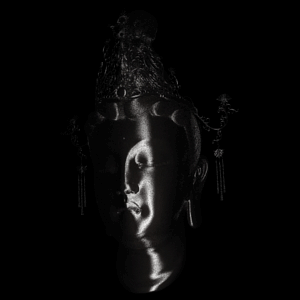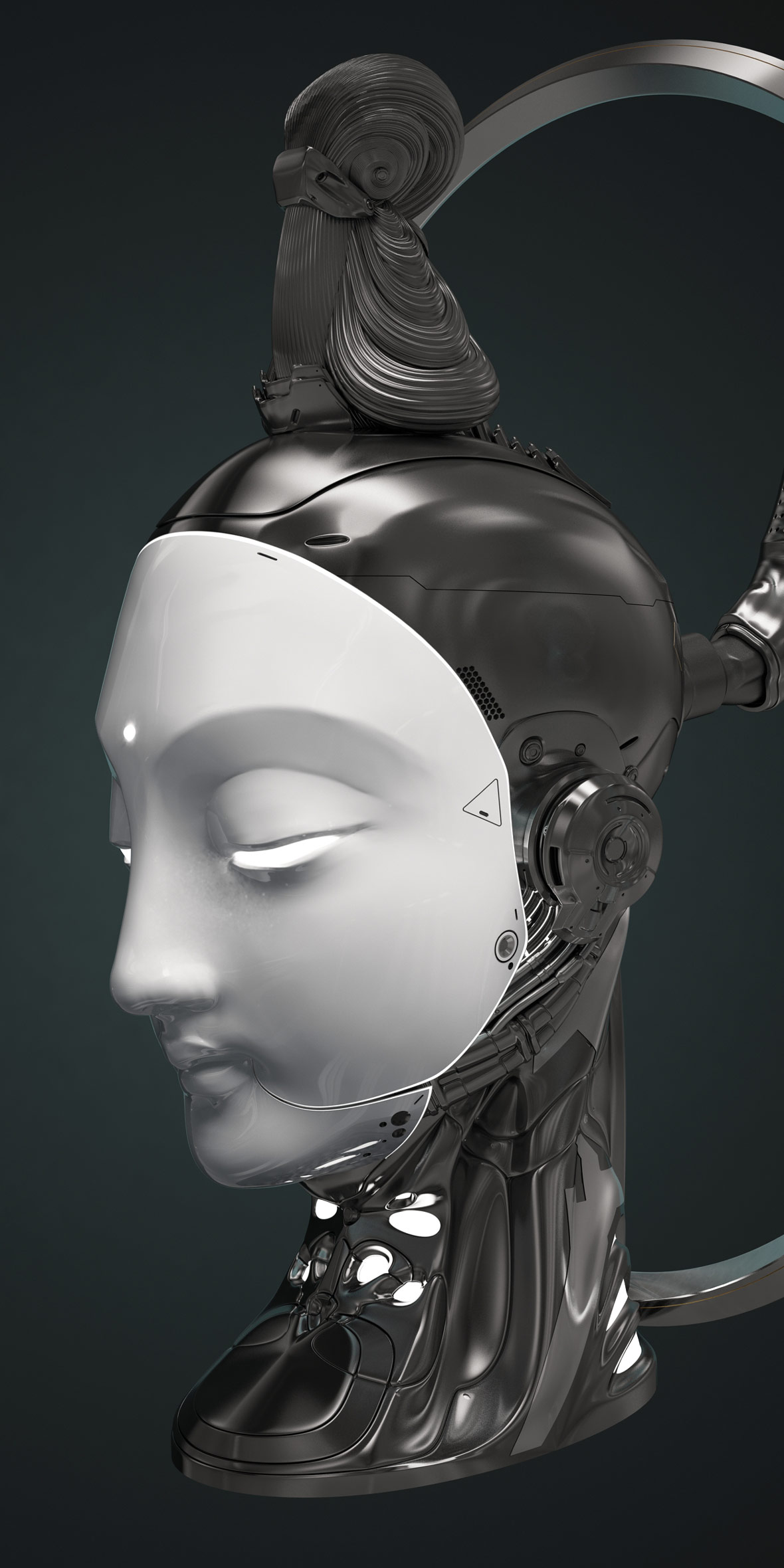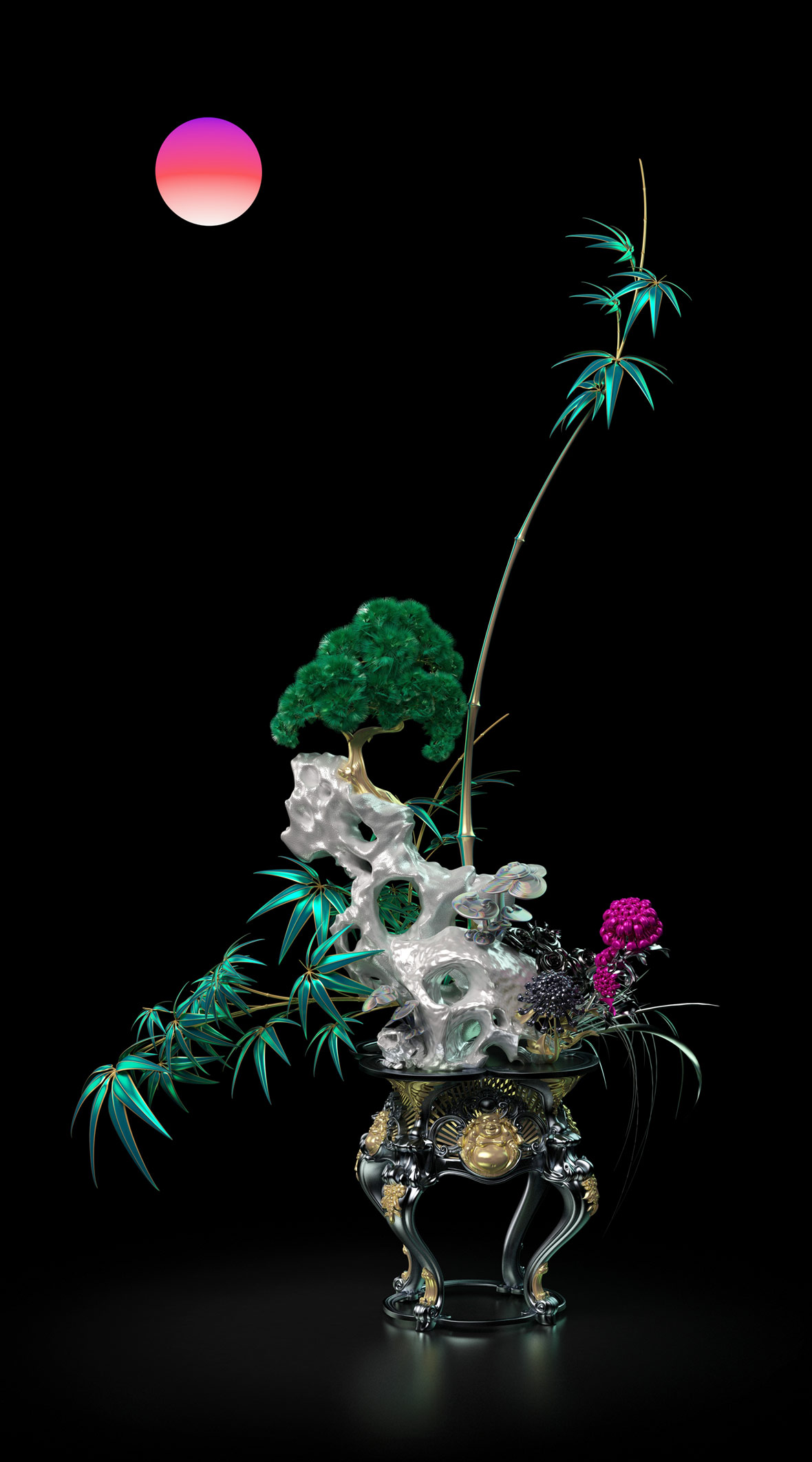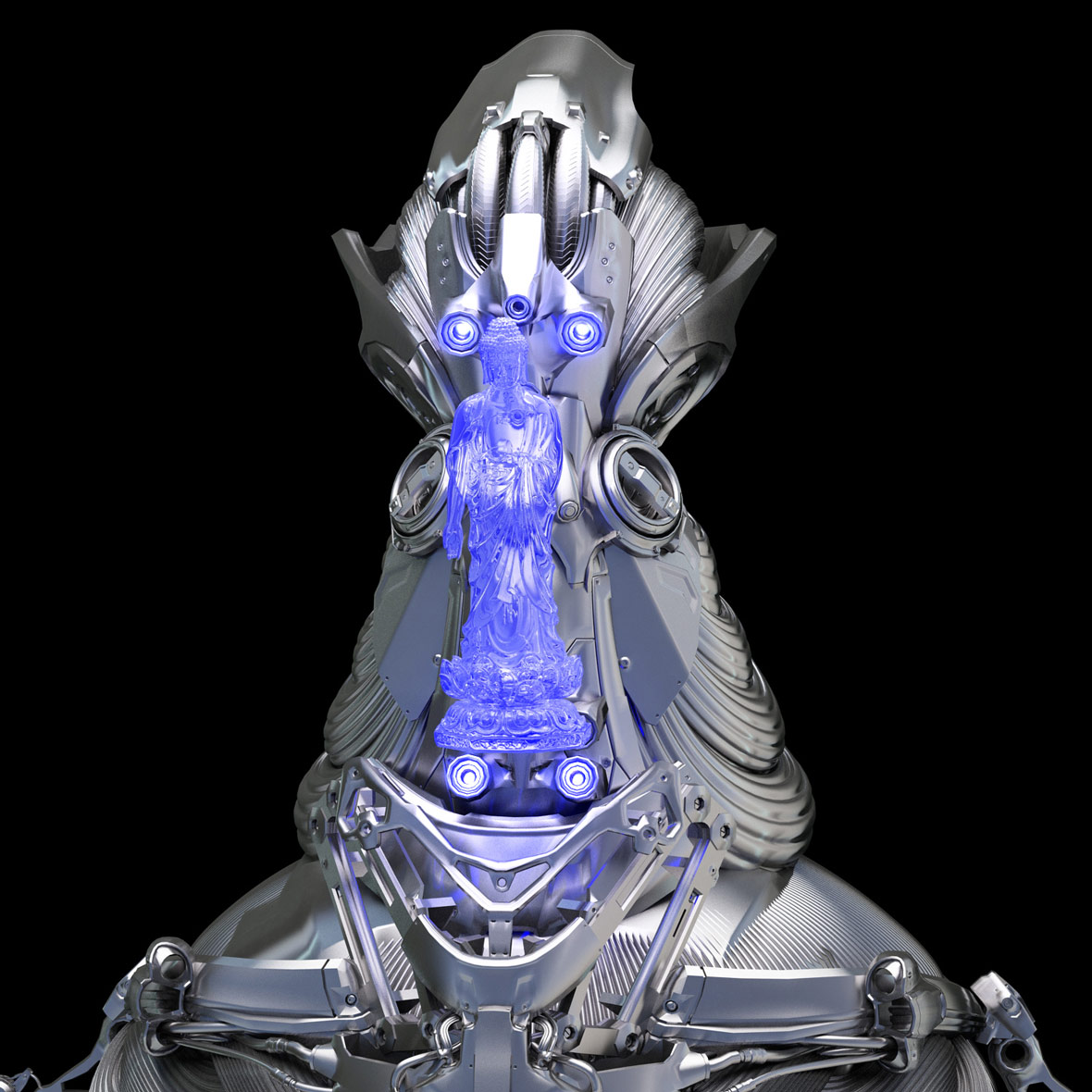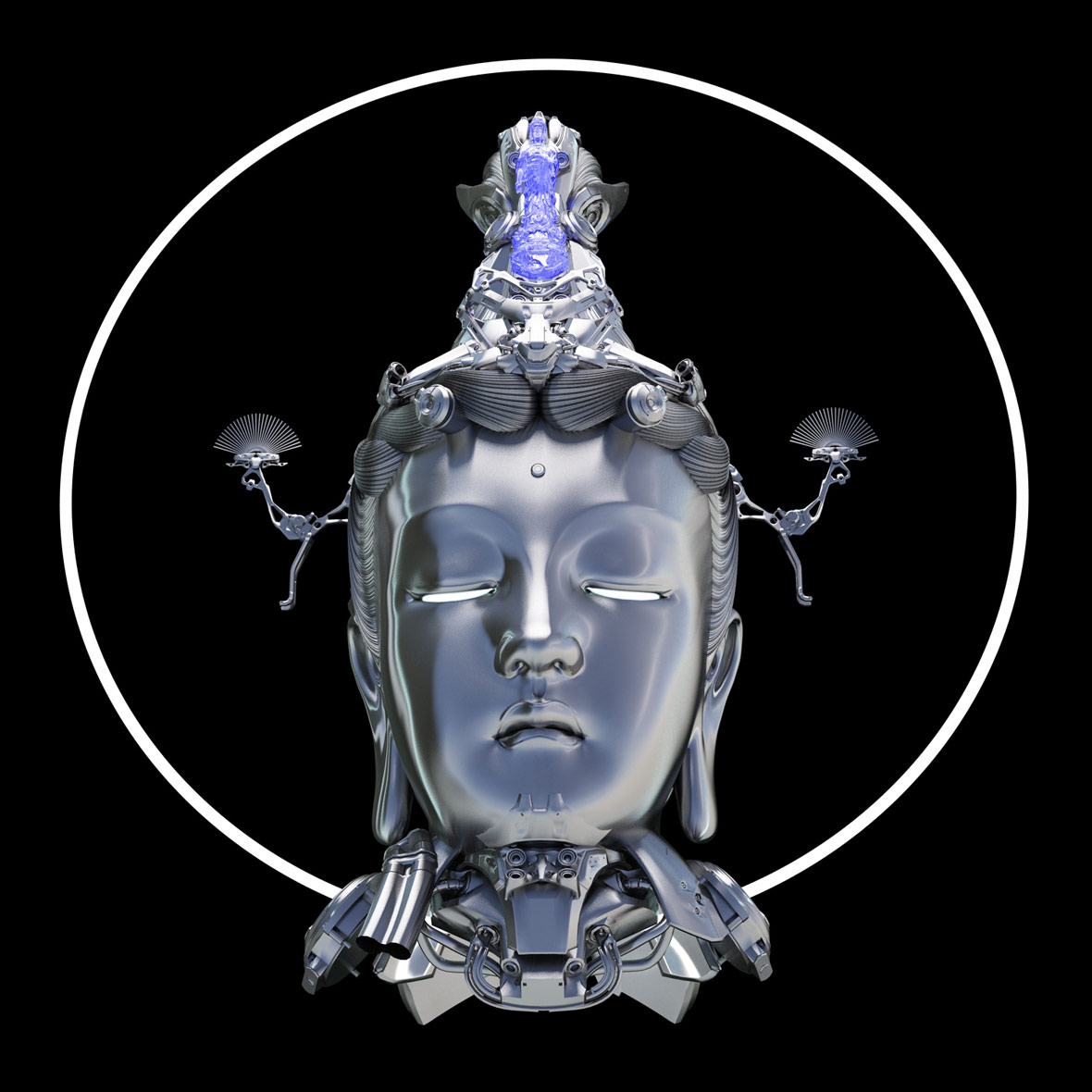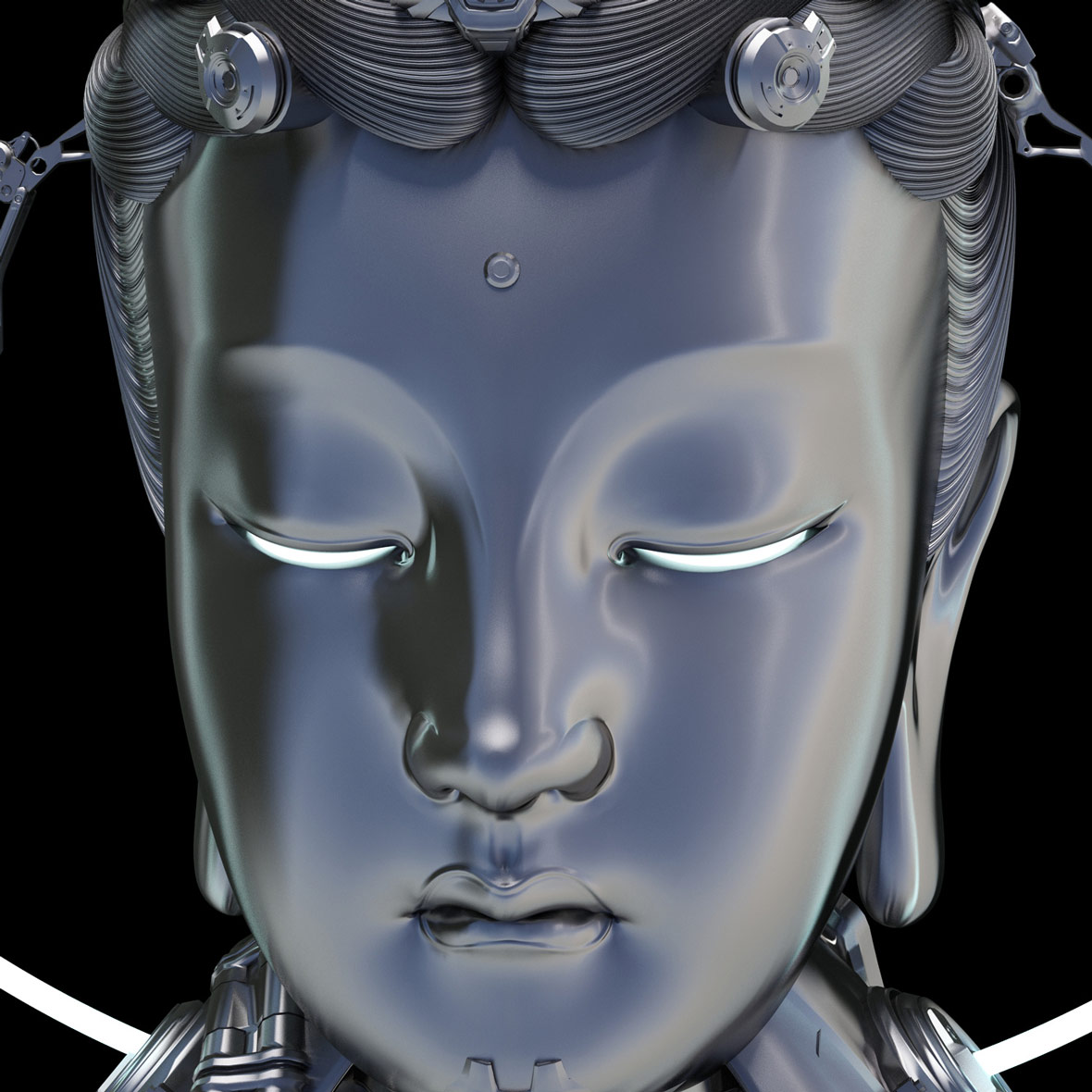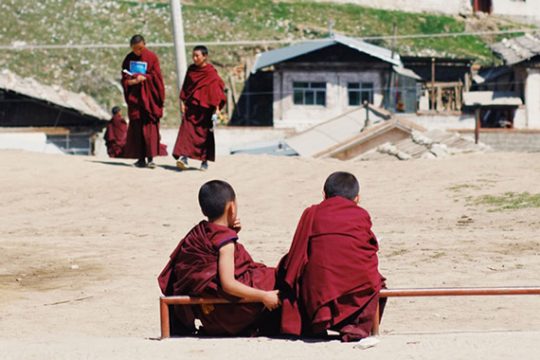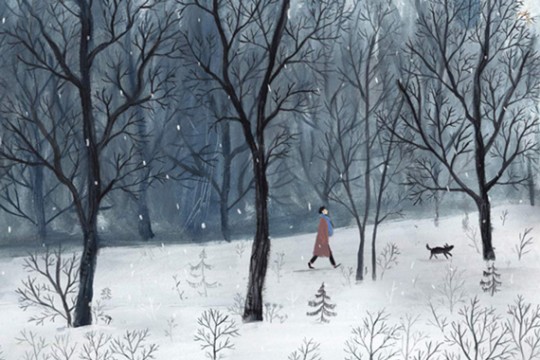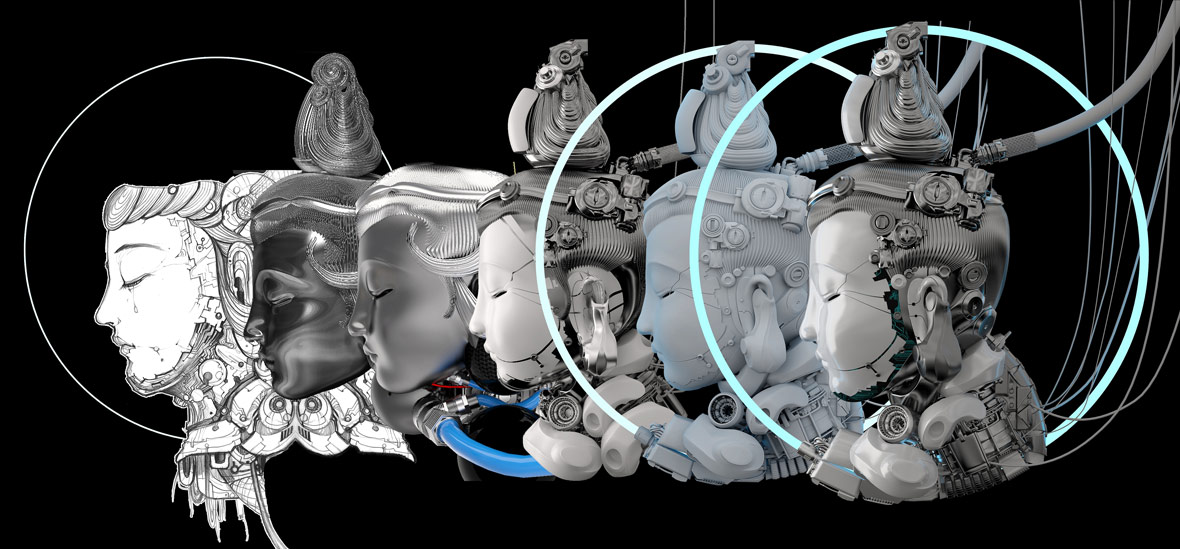
From the spread of Buddhism into China’s Central Plain during the Han Dynasty to the legendary pilgrimage of the Buddhist monk and scholar Xuan Zang’s during the Tang Dynasty, Buddhism is deeply steeped in the culture and history of not only China, but Asia as a whole. As the Chinese saying goes, “Where there’s a mountain, there will be a temple,” and even to this day, this still holds true. In Chinese, the word fo means Buddha. But for Xiamen-based artist Da Bei Yu Zhou (a moniker that’s based on a wordplay of the famous Da Bei Zhou, otherwise known as the Great Compassion Mantra, which is one of the most well-known Buddhist hymns), his use of “fo” in Chinese isn’t referring to the actual Buddha but is being used interchangeably with the term buddharupa, a word used to refer to visual depictions of Buddha. These portrayals of Buddha dominate the majority of Da Bei’s work in the form of 3D renderings. To him, “fo” represents meditation and self-reflection, a higher level of consciousness. We recently met up with Da Bei for a chat to try and better understand what his “fo” statues represent to him.
自两汉时期佛教传入中原,到玄奘西天取经,至今佛对亚洲各国的影响不容小觑,俗话说有山的地方就有庙,现如今还是如此。“仏”一般被解释为佛像的意思,厦门3D艺术家大悲宇宙认为,“仏”是觉悟和思考的化身,是人类更高级的一种形态。他的作品主要是3D的佛像作品,而通过与他的谈话或许能够明白些他眼中的“仏”。
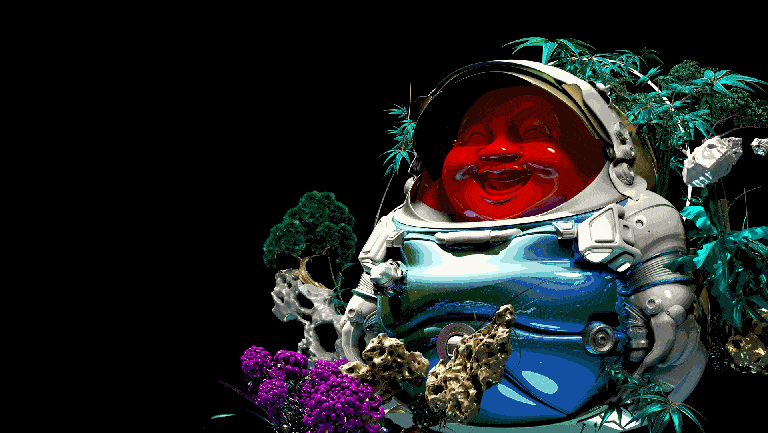
Neocha: In some of your recent works, you’re mixing Buddha statues with elements of science fiction and presenting it in a 3D format. It’s quite unique. What inspired you to do this?
Da Bei: I see many parallels between the concept of buddhas and scientific technology. For example, the concept of emptiness in Buddism and virtual reality. Through technology and the internet, we’ve reached a point where we now have access to an unbelievable pool of information that we couldn’t fathom having access to in the past. Even though we’re still quite far from reaching the level of the omniscience of Buddha, but the idiom, “Lay down butcher’s knife, become a Buddha on the spot,” feels more like a prophecy now. By eliminating ignorance and tapping into the collective wisdom of mankind, an act that technology has made possible, perhaps one day we can become buddhas ourselves.
Neocha: 你最近在做的作品,是将“仏”与科幻相结合,用3D的方式来呈现,这一点挺特别的,最初是怎么想到要这么做的?
大悲: 我理解的“仏”和科学技术有很多相同的地方,比如虚拟的数字与“仏”的空性,如今通过电脑终端和互联网使我们目前达到人类获取信息前所未有的形态,虽然离“仏”的遍知万事万物似乎还有些距离,但现在“放下屠刀立地成佛”这句话现在看来更像是预言,放弃鲁莽无知运用众人智慧通过科学技术我们或许有一天能够成为我们所说的“仏”
Neocha: 3D artworks are generally focused around realism and are most often seen in animated films and T.V. shows or video games. But I notice that in some of your works, there are elements that feel closer to Chinese freehand painting. Was this done on purpose? Is there any relationship between this and your illustrative works?
Da Bei: 3D is mesmerizing. In a 3D world, you have access to a virtual space with infinite room and infinite resources. You can produce rays of light and design every molecule. This kind of experience that’s completely detached from reality is beautiful. So why would I try to forcibly create something realistic in this virtual world? When I have an entire virtual universe in the palm of my hands, why would I abide by the laws of reality to bring my vision to life? To dream of reality in a virtual world is a sad thing to me. And actually, I abandoned traditional illustrations completely when I started working in with 3D.
Neocha: 3D作品本身都是写实为主,用于动画影视和游戏行业较多,但我发现你的作品中却都有着中国画般写意的意境,你是刻意为之的吗?这与你的绘画作品是不是又有着什么关系呢?
大悲: 我觉得3D真的很迷人,在里面你能够有虚拟的无限空间和无限物质,你能够支配每道光甚至每个粒子,那种完全抽离现实的体验真的很美好,那为什么我还要在这样的虚拟里去创造写实的世界呢?反过来说“当我手握着虚拟世界为什么还在现实里用物理媒介去创造我的想象?”所以在虚拟世界里做着写实的梦对于我来说是一件特别悲哀的事情,与此同时在我用3D进行创作的时候我也彻底放弃了绘画。
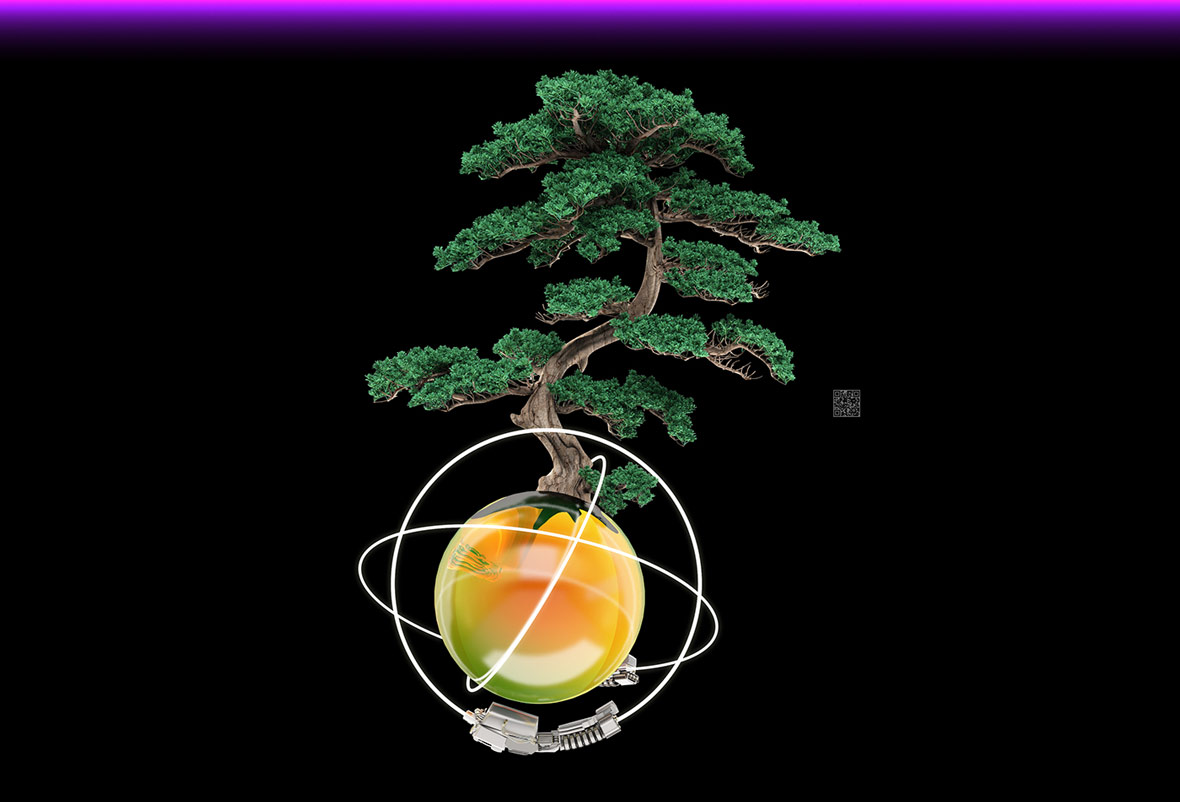
Neocha: You’ve also created many 3D works of Chinese courtyards, but with the addition of many metallic elements. It creates this incredible sense of futurism juxtaposed against these traditional structures. Can you tell us more about these works?
Da Bei: Besides my “fo” statues, I’m quite fond of traditional Chinese floral design and landscaping. If Buddha is an omniscience of self, then my works around floral arrangements represent a yearning for changes in space and time. In traditional Chinese culture, there’s always been an appreciation for decadence and laziness. There’s a beauty in it. This kind of beauty disregards all other notions of human nature, from death to love. I find it incredibly interesting; just think about that, it transcends the existence of death and love. So through my digital art, which is virtual and eternal, I’m making flowers that will never wither and statues of Buddha that will never age. This is my attempt at presenting my interpretation of this surreal sense of beauty.
Neocha: 你还做了很多中式庭院景观的3D作品,运用了很多金属质感,营造出一种难以言喻的科幻感,对于这些作品你又是怎么想的呢?
大悲: 除了“仏”以外我还特别喜欢传统的盆栽和造景,如果说“仏”是人对自己全知全能的向往,那盆栽和造景就是对时空转换的渴望。中国传统文化里我觉得一直有一种特别颓废慵懒的美,这种美,目空人性的一切,死亡、情爱都不值一提,所以这真的是太妙了,是超越了死亡和情爱的存在。所以我用虚拟永恒的数字艺术,去创造不枯萎的花、不老的仏像,去诠释着这种抽离现实的美
Neocha: What is your creation process like? From modeling to rendering, the process must be quite time consuming. Can you tell us about some of the challenges you’ve faced in doing digital art?
Da Bei: In terms of technique, it’s not particularly difficult, and I also don’t feel like the process is especially time consuming. The computer handles most of the work. The difficulty I face is within myself. I’m a living organism that succumbs to fatigue and ailments, so these are factors that could hinder the creation process. The fragile nature of the human body is the greatest difficulty.
Neocha: 你的创作流程是怎么样的呢?从建模到渲染的过程一定是很漫长吧?跟我说说你遇到的困难有哪些吧?
大悲: 技术上并不困难创作时间也并不漫长,毕竟计算机已经承担了大多数工作。难的是我,是血肉之躯,作息和偶尔的病痛都是阻扰创作和思考的原因,肉体的脆弱和消耗是最大的困难。
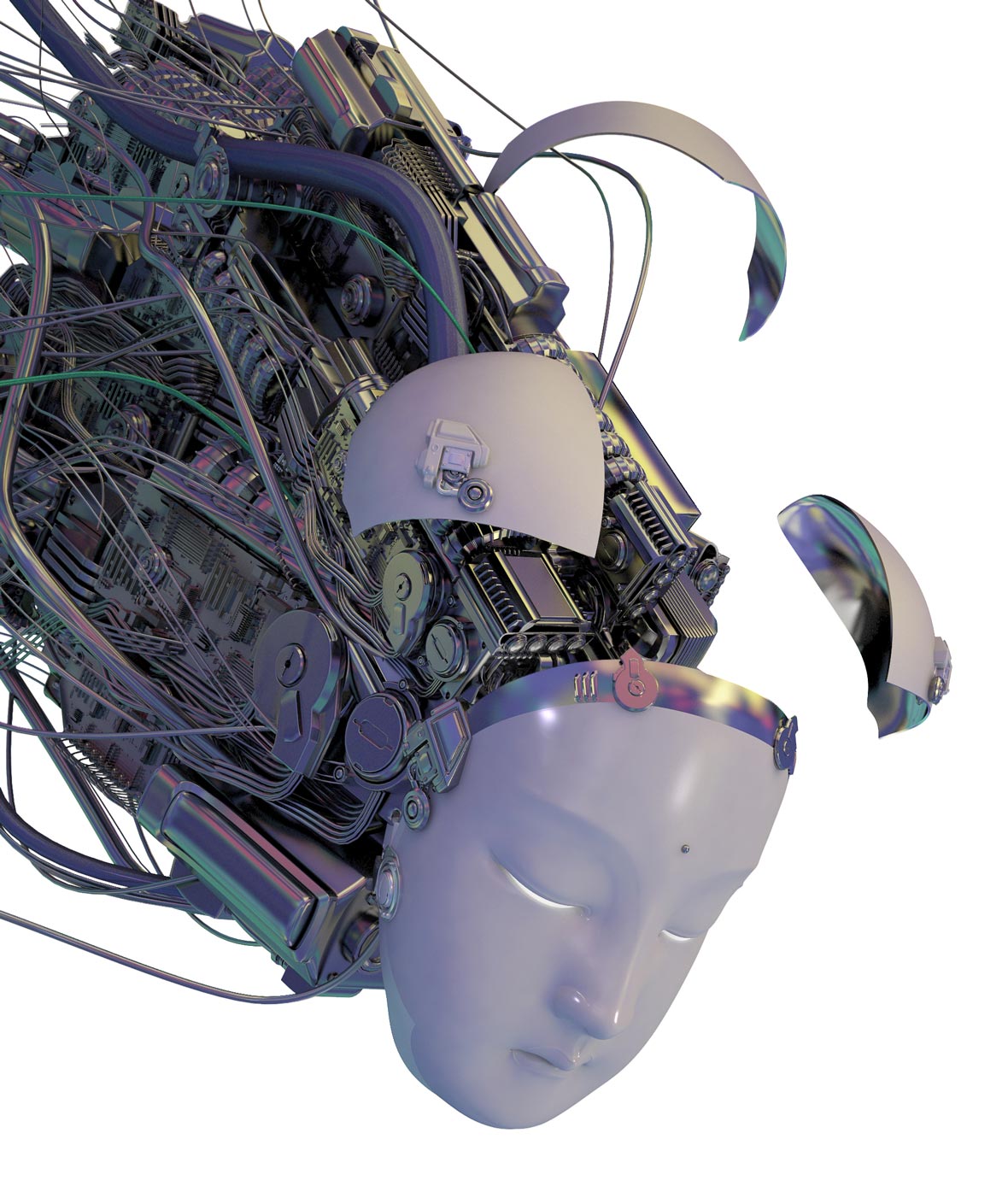
Neocha: You’ve tried to sell your work by putting them onto SD cards. It’s an interesting idea. What inspired you to do this?
Da Bei: Multimedia art and digital art are uniquely beautiful in their own ways. I feel like if the work is displayed on a monitor, then it can be categorized as digital multimedia art. Everybody feels differently about these works. In Teary Buddha 90 Minutes, I show a 3D rendering of Buddha on the brink of tears. It lasts 5,400 seconds and is accompanied by the sound of ocean waves; the image is also constantly rotating and changing colors. The Buddha here represents order, it’s an embodiment of logic. But the tears in his eyes, that don’t quite fall, represents existence. For the rotations, when he’s facing you, his color is a resplendent gold; when his side is facing you, he becomes silver; and when his back is facing you, it’s the color of loneliness, a dark black. It’s a patterned visual but doesn’t adhere to any rhythm. When people watch this, I want them to experience different emotions. And to do this using digital data – emotionless bits of an algorithm – this is what I find to be most interesting.
Neocha: 你还在尝试将3D作品导入SD卡然后进行售卖,这个方式倒是挺有趣的,你对这样的方式有什么看法呢?
大悲: 多媒体艺术、数字艺术有着特别独特的美,我觉得只要是通过屏幕展示的作品都是广义上的数字多媒体艺术,每个人对这些作品的感受都不尽相同,在我的《泪目菩萨90分钟》里就是一个眼角挂泪的3D菩萨,在5400秒的海浪声里,不停的旋转变换材质颜色。菩萨代表的是秩序是理智的化身,但是眼角不掉落的眼泪是反秩序是感性的存在,在旋转的时候面对你是灿烂的金色,当他侧对你时是无暇的白色,背对你时又是孤独的黑色 ,就在这样的有序规律和没有任何节奏的影像里,你在看他的时候似乎也能产生出很多不同的感情,而这一切的由来都只是纯粹的数据,没有感情的数据,可想而知这是多么有趣。
Neocha: When it comes to the exhibition of 3D works, what are your thoughts? There are still limitations on works that are inkjet printed and framed. In the future, maybe VR will come into play? What do you plan on working on next?
Da Bei: Yup, I’ve constantly thought about how to best display my work. Not only VR, I hope that we can reach a point where people will be able to directly upload data into their brains. I’ll still be adhering to the themes that I’ve been working with, which are, of course, the concept of “fo” along with my interest in Asian floral design. I’ve also developed an interest in glitch art recently; I’m looking forward to experimenting with this in the future.
Neocha: 对于3D作品的展示,你有什么想法么?毕竟做成喷绘然后装裱展示的方式还是有很大的局限性的,或许未来可以用到VR设备?接下去还会带来什么样的作品?
大悲: 是的,对于怎么去更好的展示作品也是我一直在思考的,不仅是VR吧,希望以后能够直接数据入脑。基本上还是会持续的在盆栽造景和“仏”的主题上去做拓展,最近迷上了乱码,故障艺术也是我特别喜欢的,希望有机会能够好好尝试一些。
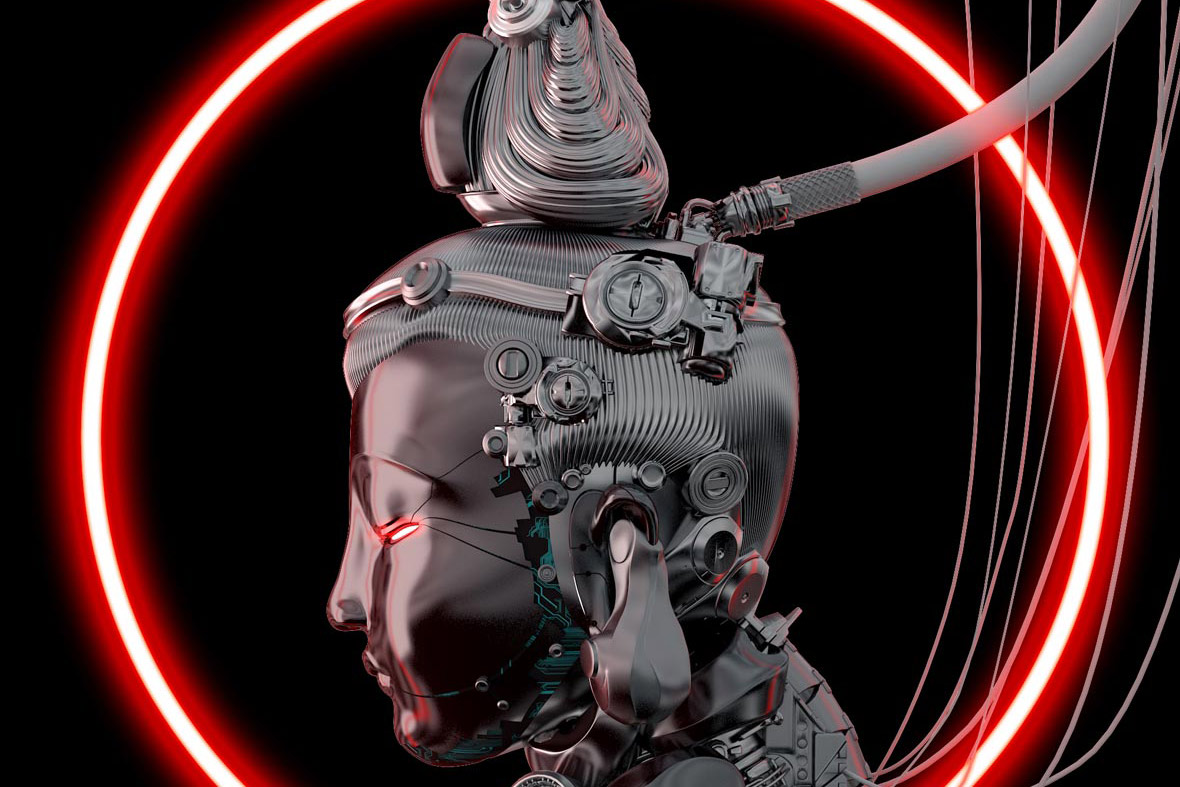
Behance: ~/dabeiyuzhou
Tumblr: dabeiyuzhou.tumblr.com
Weibo: ~/dabeiyuzhou
Instagram: @dabeiyuzhou
Contributor: Sonic Yuan
Behance: ~/dabeiyuzhou
Tumblr: dabeiyuzhou.tumblr.com
微博: ~/dabeiyuzhou
Instagram: @dabeiyuzhou
Contributor: Sonic Yuan

